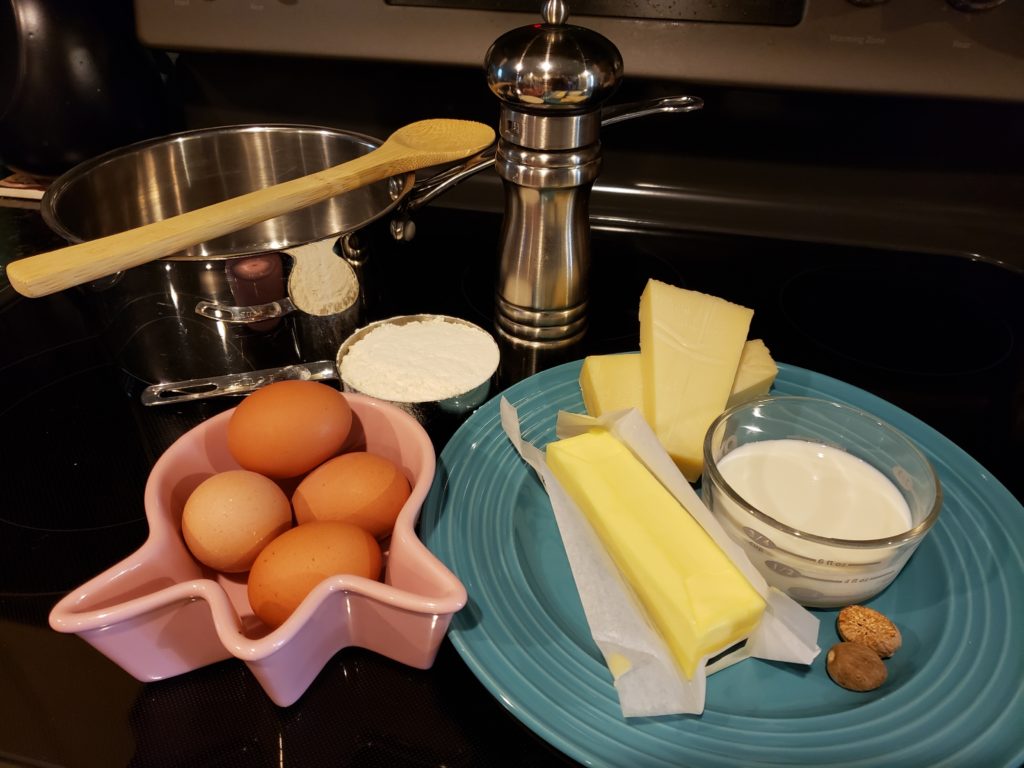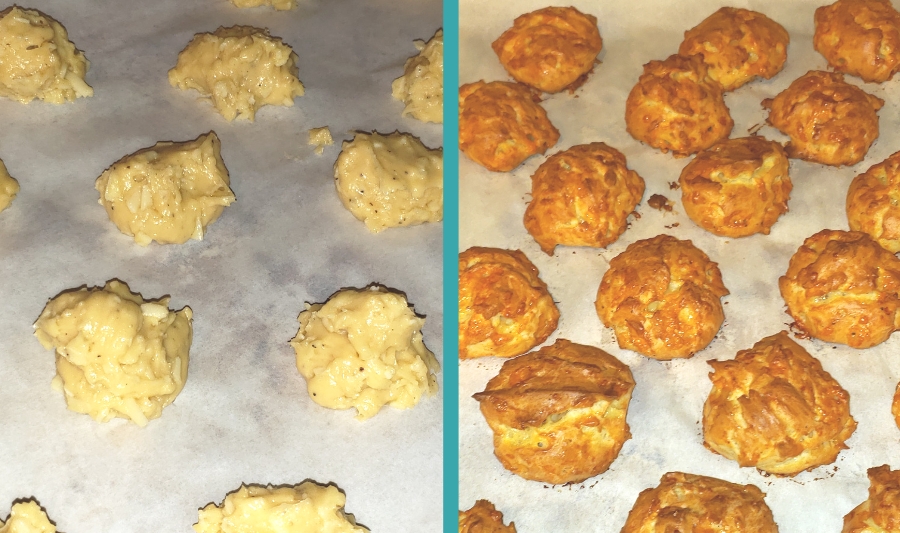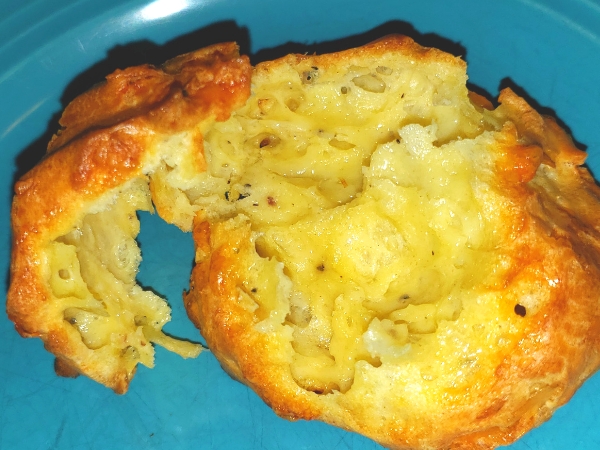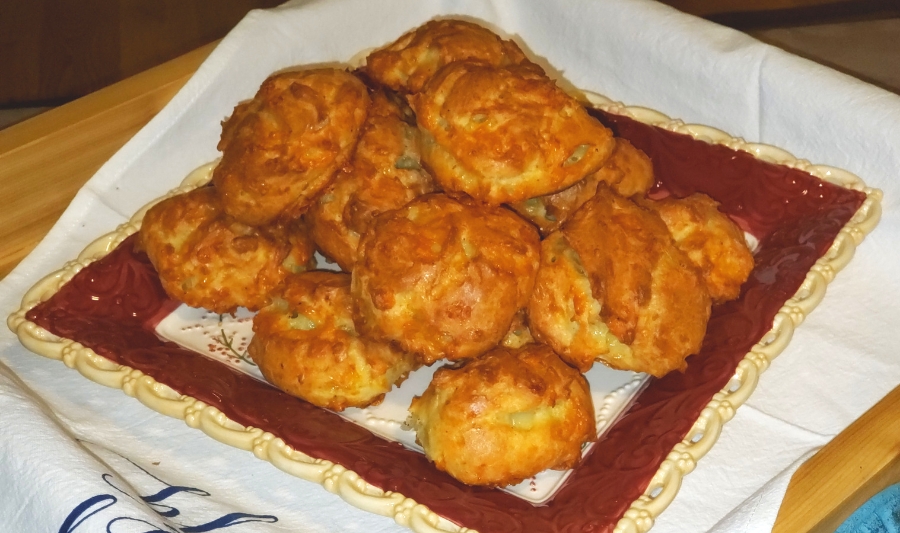In the book of I Samuel, we find the story of David slaying Goliath. What you may not remember from your Sunday School lessons is that David was there in the camp, as the Israelites were facing off against the Philistine army, because his father Jesse sent David to deliver supplies to his three eldest brothers. Among those supplies? Ten portions of cheese, for their commander.
Cheese has been around for thousands of years, probably as long as humans have kept herds of animals, but we actually know very little about where and when it originated. There’s lots of speculation, of course. Most suggest it was happy accident; in ancient times, milk was stored and transported in the preserved stomach of a ruminant animal, most often a sheep or goat. Rennet, an enzyme that is naturally present in the stomach lining (and is still used in modern cheese production), would almost certainly have caused the milk to curdle. Others speculate that salt may have been added to milk in an attempt to preserve it, or it could have been sprinkled with an acid like fruit juice for the same reason. Either of those would have caused curdling … and curds equal cheese. Adding salt to the curds would preserve them even longer—and in the days before refrigeration, that was undoubtedly a very welcome development.
Although cheese predates our recorded history, it has been found in Egyptian tombs dating back more than 3000 years. Preserved cheeses have also been discovered in China, and dated to around 1650 B.C. As best we can tell, though, cheese-making was first done on a large scale during the Roman Empire. Homes of wealthier Romans often include separate rooms for producing, aging, and smoking cheese. Because they were nutrient-dense and portable, Roman armies carried various hard cheeses with them to feed the soldiers.
Today is National Cheese Day. If you’re like many Americans, this food is a part of daily life. It’s so common that it seems we’re either eating cheese regularly or intentionally avoiding it. Some choose not to partake because of special dietary restrictions; others cannot because they suffer from lactose intolerance or allergies. But for those of us who don’t fall into either category, cheese is both a healthy—in moderation, of course!—and delicious addition to our diets.
Thirty years ago, in the Introduction to her iconic The Way To Cook, Julia Child wrote the following:
An imaginary shelf labeled INDULGENCES is a good idea. It contains the best butter, jumbo-sized eggs, heavy cream, marbled steaks, sausages and pâtés, hollandaise and butter sauces, French butter-cream fillings, gooey chocolate cakes, and all those lovely items that demand disciplined rationing. Thus, with these items high up and almost out of reach, we are ever conscious that they are not everyday foods. They are for special occasions, and when that occasion comes we can enjoy every mouthful.
For many of us, the following recipe may well belong on that shelf … if only because the “disciplined rationing” is so very difficult. These delicate little puffs could easily become a holiday tradition, or be saved for having the boss over for dinner (if people do that anymore?), but are just as wonderful when you gather with a few friends for tea and snacks. Set a plate of these down on the table, and they may first be fooled into thinking you’ve made drop biscuits. Once they bite into one, though, they’ll know better. But the beauty of this elegant recipe is that, as much as it seems like a special indulgence, it’s actually quite easy to make. And if you’re a cheese lover, as a lot of us are, you will indeed “enjoy every mouthful,” just as Julia encouraged.

Gougères (French Cheese Puffs)
adapted from Saveur magazine
INGREDIENTS:
- 1⁄2 c. milk
- ½ c. water
- 8 Tbsp. (1 stick) unsalted butter
- 1⁄2 tsp. kosher salt
- 1⁄2 tsp. freshly ground pepper, or to taste (optional)
- a few grates of fresh nutmeg (also optional)
- 1 c. all-purpose flour
- 4 large eggs, at room temperature
- 6 oz. Gruyère cheese, grated (substitutes include Emmental, Comté, Jarlsberg, or another dry, flavorful cheese)

INSTRUCTIONS:
Set out eggs 30 minutes to 1 hour ahead of time, so they come up to room temperature. Grate the cheese before you begin, as well.
Heat the oven to 425°F, and line two large, ungreased baking sheets with parchment paper.
In a large saucepan over High heat, combine milk, water, butter, pepper, nutmeg, and salt; bring to a boil. Add flour and stir until dough forms.
Reduce heat to Medium and cook, stirring constantly with a wooden spoon, for 2–3 minutes.
Transfer to a heat-safe bowl. (Remaining in the hot pan will over-cook the dough.) Allow dough to cool for a few minutes before adding the egg.
Using a mixer (stand or hand-held), add 1 egg and beat until combined. Repeat with remaining eggs, one at a time, until all 4 eggs are incorporated and dough is smooth. Stir in the grated cheese until well-mixed.
Scoop roughly 2-Tbsp. portions of dough onto the parchment-lined baking sheets, leaving at least 2” between each one. Place the baking sheets in the oven; immediately reduce the temperature to 375°F, and bake until golden brown, approximately 25–30 minutes. Here’s what they look like, before and after baking: Serve warm from the oven, or at room temperature. Yield: approximately 2 dozen.
Serve warm from the oven, or at room temperature. Yield: approximately 2 dozen.
To make ahead of time: cool baked gougères completely, refrigerate in a sealed container until shortly before you wish to serve them, then pop them in the oven at low temperature (200-225°F) for 5–7 minutes, just to heat them through.

Click to download a printable copy of this
Gougères (French Cheese Puffs) Recipe
…
and if you’re in the mood for something sweet for #NationalCheeseDay,
don’t miss Bridgitt’s amazing recipe for Vanilla Cheesecake.
Visit our Recipes archive for LOTS of great favorites!
